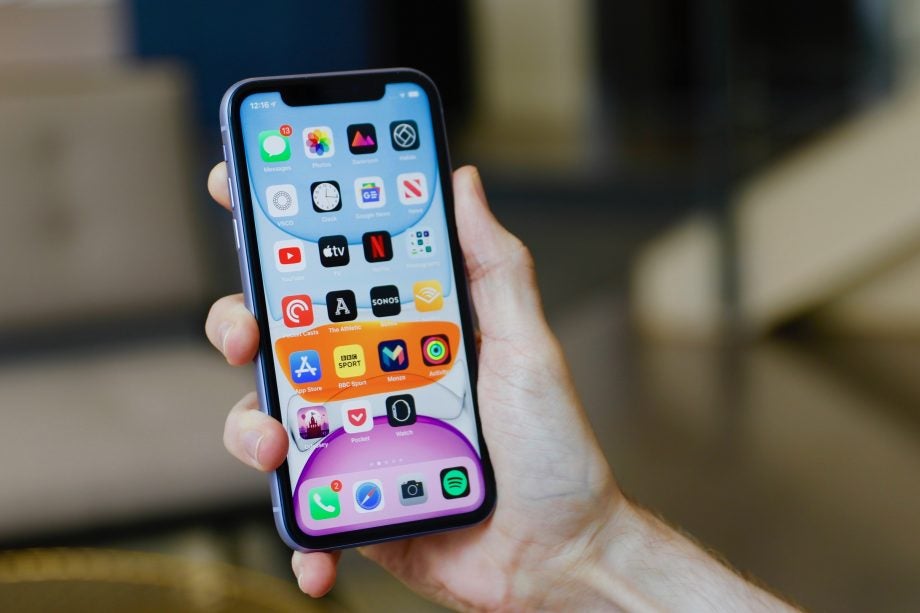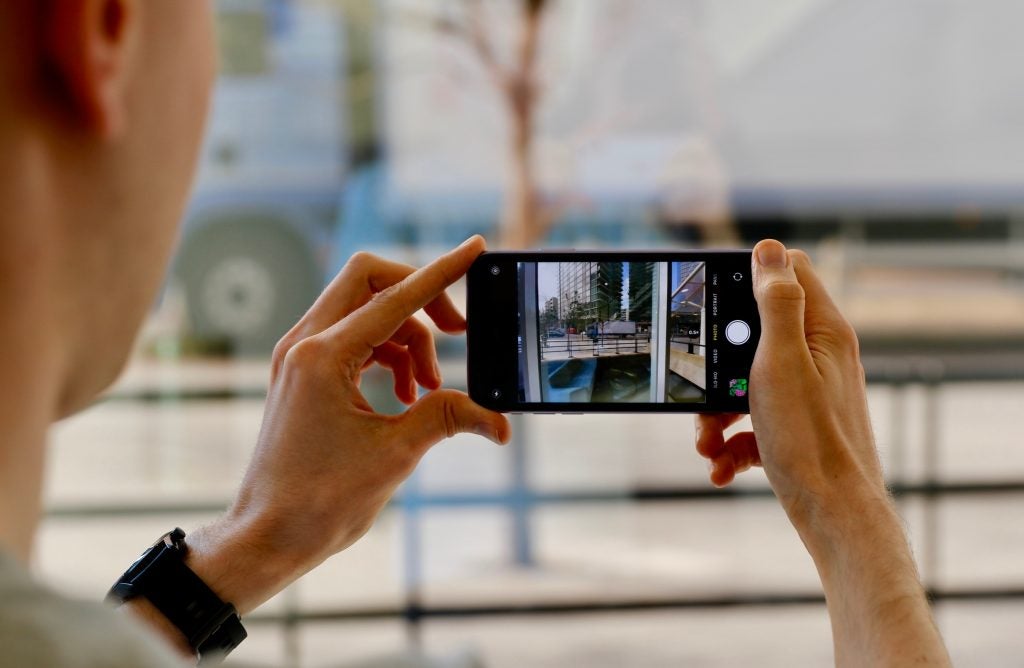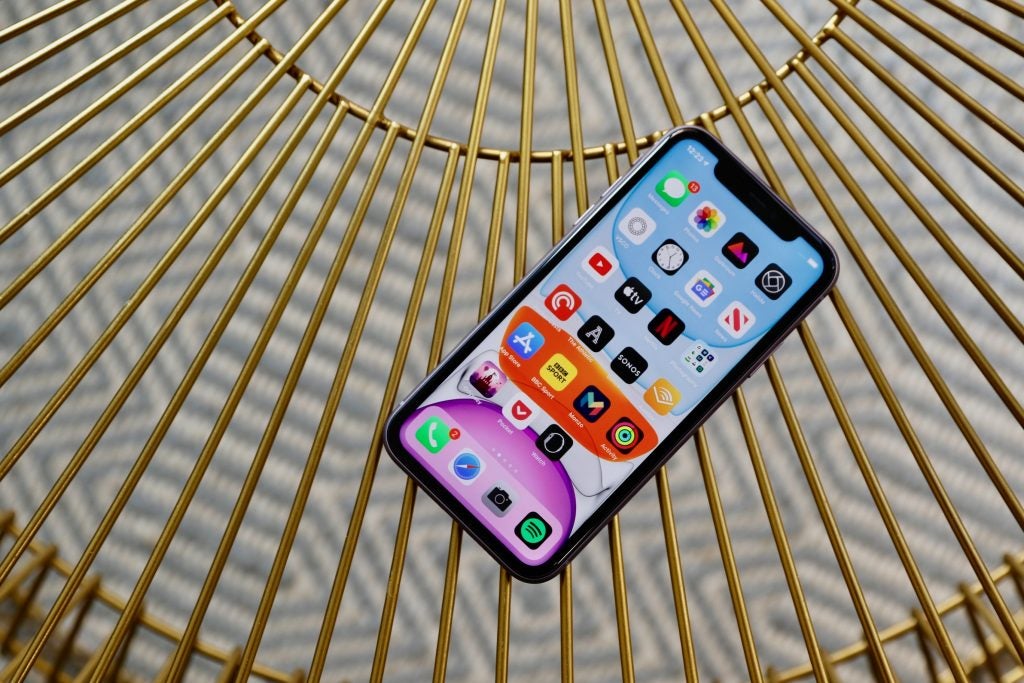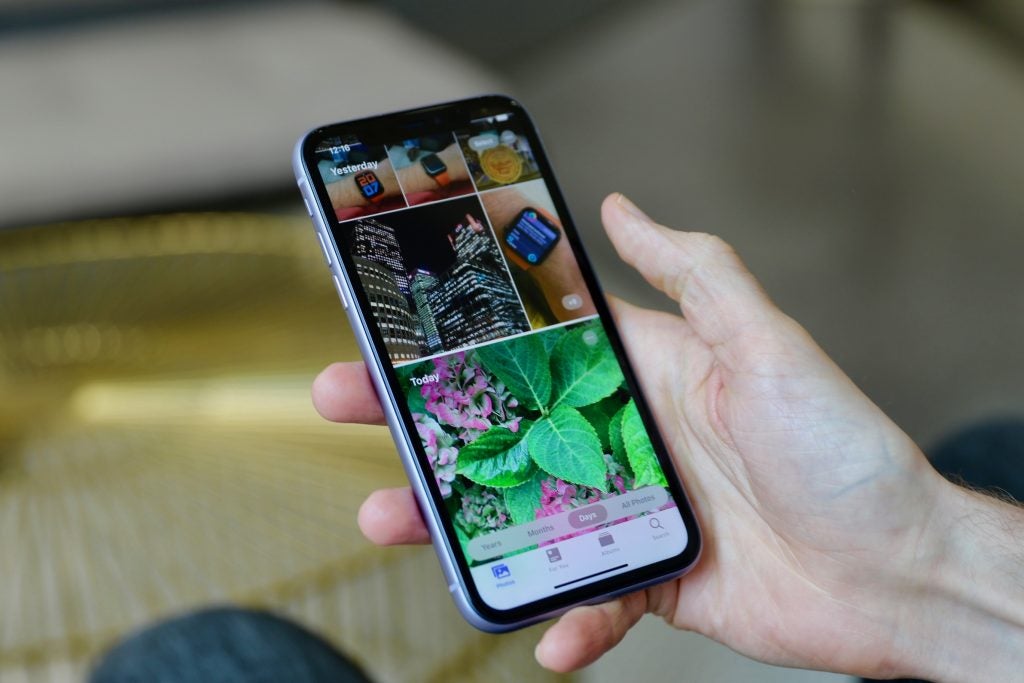iPhone 11 Review
The natural successor to the ridiculously popular iPhone XR


Sections
- Page 1 iPhone 11 Review
- Page 2 iPhone 11 Camera Review
- Page 3 iPhone 11 Battery Life Review
- Page 4 iPhone 11 Performance Review
Verdict
Apple has seen what most people want from the iPhone 11. Unless you’re a complete sucker for an OLED display, or particularly want the zoomed telephoto lens, there isn’t much you’re missing out on by not getting the Pro model. Especially when you consider the over £300/$300 saving you’re making. If you’re coming from an iPhone XR you might want to wait a year and see what the 2020 iPhone brings. However, if you’re updating an older iPhone then you’ll notice the vast array of improvements to camera, battery life and overall design straight away.
Pros
- Great camera
- Strong battery life
- Nice colour variety
- Good value
Cons
- Screen resolution is a bit low
- Notch remains
Key Specifications
- 6.1-inch Liquid Retina LCD display
- A13 Bionic
- 64, 128, 256GB storage
- 2 x 12 megapixel cameras on the back
- True Depth 12 megapixel on the front
- 5w charger
- iOS 13
The iPhone 11 is the successor to the excellent iPhone XR and it is the best overall iPhone you can buy this year.
iPhone 11 takes the iPhone XR, keeps the design virtually unchanged and alters the internals. There are now two cameras on the back, for example, and the same A13 chipset you’ll find in the Pro model.
Below we’ll talk about the new iPhone’s camera, display, performance, design and battery life. We’ve been using the iPhone 11 since its release so that’s several months now, and as you would hope it is standing up well.
Related: Read our iPhone 12 review
It has received a number of iOS updates that have sorted a number of early software issues we had with – notably the system-wide search functions properly again – and our review unit hasn’t picked up any obvious dings or dents even though it’s not being used with a case.
Since the iPhone 11 hit shelves, we’ve also seen the Pixel 4 debut. Even though in some situations Google’s flagship takes better pictures, the versatility of the iPhone camera shines through.
Camera – The iPhone 11 camera is an excellent improvement in so many ways
As the camera is such a vital part of the new iPhone 11 series, and because it is just so darn good, we’ve got a dedicated iPhone 11 camera review page featuring an extended, in-depth look at the duo of cameras on the back of this phone – along with a look at how it compares to two of our favourite competing Android phones.
The shorter verdict is that these new rear cameras are excellent. Even though the iPhone 11 is a lot more affordable than the Pro models, it retains exactly the same wide angle 12-megapixel optical image stabilised (OIS) main sensor with an f/1.8 aperture and the same 12-megapixel ultra wide angle camera (f/2.4).
The only thing you’re missing out on is the telephoto, 2x ‘optical’ zoomed camera that sits on the Pro. I’d take ultra wide angle over zoomed any day, so it’s a fair trade in my eyes. When comparing photos from the Pro and 11 I can’t see any differences at all.

There are two cameras on the back of the iPhone 11
This ultra wide camera lets you cram so much more into your shots and it’s ideal for landscapes, however it’s a smaller sensor with a slower lens so it can’t match the main sensor for pure quality. Still, the versatility it adds is fun to shoot with and I have constantly been jumping to it when I think there’s an interesting shot available.

iPhone 11 (left) vs Pixel 3 (right) (drag the slider to compare the two photos)
It’s far from a new thing for phones to pack such a sensor, but it’s great to see Apple adding one here anyway. Apple has also added 4K60 video recording, made improvements to its Smart HDR feature that was introduced last time around and has finally built a Night mode into the camera app for much better shooting when the light is poor.
Snaps taken with the Night mode automatically enabled are, on the whole, fantastic. You get clean, crisp photo which matches – and can exceed – the Pixel 3 and P30 Pro. There seems to be more detail retained with the P30 Pro, but that’s something which is only hugely noticeable at larger sizes than a phone screen.

iPhone 11 (left) vs Pixel 3 (right) (drag the slider to compare the two photos)
Pictures taken in less taxing environments are predictably excellent. Detail has been dramatically upped from the previous iPhones and, to my eye, dynamic range is better – giving you a clearer definition between the lightest and darkest elements of the picture.

Other phones might be able to match the iPhone 11 in terms of general picture quality, however the iPhone’s video capabilities are head and shoulders above the rest. You can shoot on both cameras up to 4K60fps and the colours and tone are well-balanced across both.
The front camera now boasts 12 megapixels and can now capture, erm, ‘slofies‘. These slow-motion selfies are surprisingly fun but also a bit gimmicky. You’ll likely use it once and then forget it’s there.
- For more on the camera including loads of photo samples check out our in-depth iPhone 11 camera page.
Design – The DNA of the iPhone XR lives on and that’s a good thing
Apple seems more settled than usual with the designs of its trio of iPhones. The iPhone 11 Pro line has been virtually unchanged since the iPhone X arrived and just about killed the bezel, while the iPhone 11 keeps the same look and feel as the iPhone XR.
It still weighs the same, at 194g, keeps the 8.3mm thickness, and were it not for the redesigned camera module on the back and slightly more muted array of colours, it would look identical to the phone it’s replacing.
That means you’ve got a device that feels a lot sturdier than the iPhone 11 Pro and 11 Pro Max with a rigid aluminium frame and a glass back. Apple claims that the glass used here is the ‘toughest glass on a smartphone’ thanks to a “dual ion-exchange strengthening process“, and this covers both the front and back.
What that really means for you, if you accidentally drop your shiny new phone on a stone floor, remains to be seen. I have already seen plenty of examples of cracked iPhone 11s. Surprisingly, Apple’s case line for the iPhone 11 is weak, with the leather and silicone options reserved for the pricier Pro – in its place you’ve got a fairly cheap-feeling plastic case.
The IP water resistance rating has also been upped to IP68, matching the iPhone XS. This means protection in water up to 1.5m deep for up to half an hour.
Where the design differences are most obvious is the new, larger camera housing. The iPhone 11 adds a second camera into the mix, making both sensors physically larger in the process. These are cameras that really stand out and become part of the phone’s design, rather than blending in.
Even though they look quite bulbous in pictures, the cameras don’t jut out too much from the back of the phone and I actually like the way they look. There’s even a nice contrasting matte square housing the camera sensors and flash that adds a bit of flair. You will notice the phone doesn’t sit flush to a surface if you put it on a table, making it a bit annoying to type without holding the phone.

iPhone 11 mirrors the XR in terms of looks
The iPhone XR introduced bright colours to the iPhone line for the first time since the often derided iPhone 5C and they remain here. For the iPhone 11, Apple has muted some of the brighter colours, giving them more of a pastel finish. I’ve been using the purple hue and I am a big fan – having a more saturated purple would have looked gaudy. You’ve also got a green that reminds me of a seventies bathroom suite, a light yellow and more traditional colours like white and black. A deep Product(RED) version rounds off the selection.
A year on from the iPhone XR, and two from the iPhone X, I do have to say this design is starting to feel slightly in need of a refresh. While the iPhone 11 remains a good-looking phone, the overly-large notch and slightly thicker-than-expected bezel look dated when compared to Samsung Galaxy S10 and OnePlus 7 Pro. If you’re coming from an older, pre-iPhone X device then you’ll see huge improvements. This is a much more manageable device than, say, the iPhone 8 Plus and it crams a bigger screen into a smaller overall footprint.
I find the iPhone 11’s size the best out of any iPhone: more screen to play with than the 11 Pro without feeling overly bulky and heavy. It’s the perfect mix and I wish the 11 Pro came in this size.

(drag the slider to compare the two photos)
Screen – The iPhone 11 screen is its least impressive trait
The screen remains the same as the iPhone XR too, likely to the dismay of many people. The 6.1-inch ‘Liquid Retina LCD’ still falls below the competition in terms of resolution and it would have been nice to see the 1792 x 828 panel upgraded to a 1080p version.
Does it make that much of a difference? Not really, no. If you go pixel-peeping with an iPhone 11 Pro and a high-end Android phone next to it you will notice a little less sharpness, but this is a bright and colour-rich display that comes in at the perfect size.
True Tone is onboard for altering harsh hues depending on your environment and you can bring the screen to life by raising it or tapping.
Even more than a resolution boost, I would have liked Apple to go full-on OLED across the whole iPhone range. The deeper colours and inky black of the iPhone 11 Pro are hard to return from and this remains the biggest weakness with the iPhone 11’s display.

The screen can’t match the iPhone 11 for resolution
Battery life – The iPhone 11 battery life isn’t the range’s best, but it’s close
The iPhone XR seriously impressed when it came to endurance, outlasting the ‘Plus’ model iPhones and comfortably sitting as the Apple flagship with the best battery life.
The iPhone 11 Pro Max might have bagged that award with its massive improvements over the iPhone XS Max, but the iPhone 11 is still a really long-lasting phone that I found went slightly further than its predecessor on a single charge.
Apple’s claim of ‘all-day battery life’ feels completely genuine and throughout the review process there were a few days when I took the phone off charge one morning and didn’t plug it back in until midday at my desk the following day. That’s even with the slightly heavier usage that comes with getting to grips with a new phone. Some other days I was hitting the red by 10pm and I noticed the battery drains a lot faster when you’re shooting a lot of photos and video.
Apple phones have always impressed me more than Android counterparts when it comes to battery drain during intensive tasks like gaming and streaming. I’ve been getting deep into of the excellent Apple Arcade titles and 30 minutes of Oceanhorn 2 ate through 8% – pretty impressive going.
What’s less impressive is the 5w charger you’ll find in the box. Not including a fast charger is clearly a cost-cutting measure and it remains a real downer against this phone. The included charger has always felt slow and that feeling is even more obvious now that the iPhone 11 Pro models come with an 18w charger.
In 30 minutes of charging the iPhone 11 with the included plug and Lightning cable it went from dead to just 13% – hardly ideal if you’re in a rush and forgot to plug your phone in the night before. In the same amount of time, charging with the 18w plug you’ll find in the Pro’s box, it got to 38%. I’d suggest that – if you’re willing to spend a bit more – you should pick up the Apple 18w plug (£29) and USB-C to Lightning cable (£19) alongside the iPhone 11.
There’s wireless Qi charging too (7.5w) which is actually faster than the basic plug – so long as you’ve got a compatible pad.
The battery life on the iPhone 11 is impressive, no doubt, but it’s far from the overall battery champion. If you really care about battery, and aren’t put off by the move to Android, then phones like the Huawei P30 Pro – along with far cheaper options like the Moto G7 Power – are far more impressive.
Performance – Speed isn’t a problem for the iPhone 11
Inside the iPhone 11 you’ll find Apple’s A13 Bionic chipset and, according to the Geekbench benchmarking app, 4GB RAM. This is a seriously fast piece of silicone that outperforms every Android phone we’ve reviewed in benchmarks, and it feels equally as snappy in general day-to-day use.
Of course this is Apple’s fastest chip ever and that’s to be expected. Apple has full control over its hardware and software and this has always left Android phones trailing in the iPhone’s wake when it comes to benchmark and performance scores.
Yet, I am not sure anyone coming from an iPhone 8, iPhone X or XS will notice the differences right away. Swiping around iOS is smooth, apps open instantly and you’ll never be left waiting for something to load – and I would have said the exact same thing when I unboxed and started using any previous iPhone.
Where the difference will likely make themselves apparent is a few years down the line. I am confident in saying this will be a fast phone in two or three years time, and that’s really what sets iPhones apart. I didn’t suffer any poor performance while gaming, nor was there any slowdown in the camera app.

The A13 chip inside the iPhone 11 is a beast
The iPhone 11 has some fancy new audio tricks, designed to try and make the noise coming from the phone feel a bit less like it’s just coming from either end and more like it’s coming from all around the device. The ‘spatial’ audio supports common formats like Dolby 5.1 (if you’re watching from Netflix) and Atmos (iTunes) and while it’s a nice improvement over the XR it’s far from true ‘surround sound’.
Apple also said the FaceID sensor that unlocks the phone is faster this time and works at more acute angles. Speed has never been an issue for FaceID and it remains snappy, though judging it next to an iPhone XS Max doesn’t show a huge increase in speeds. In terms of the angles it can work at, I still have to pick it up from a table to get it to register, so the improvements there feel minimal.
The final piece of the performance jigsaw is a completely new U1 chip. The uses of this seem a little sparse currently, however it does make AirDropping files to other U1 and iOS 13.1 users easier
There’s no 5G support on any of the new iPhones and there’s no dedicated 5G handset from Apple this year. This was heavily rumoured in the run-up to launch and hardly comes as a surprise.
Pick the cheapest iPhone 11 and you’ll get 64GB storage, four times less than the 256GB base Galaxy Note 10. If you plan on storing lots of 4K60 video, multiple Apple Arcade games (these seems to be usually about 1GB each) and music, then that will quickly fill up. For an extra £50/$50 you get the 128GB model which represents much better value. There’s a 256GB option, too.
iOS 13 – iPhone 11 brings Dark mode and more
iOS 13 isn’t exclusive to the iPhone 11 and if you’ve already got an iPhone from the past few years then you’ll be able to upgrade that to benefit from a number of the new features. Still, the latest iOS updates always seem to perform best on the newest hardware.
In terms of features, iOS 13 is far from a complete rethinking of the platform, but that’s not to say there aren’t a few choice bits here to get excited about.
Apple Arcade pretty much came out of nowhere for me. I had almost no hype or anticipation for Apple’s all-you-can-eat gaming service – and then I started playing some of the games. For £4.99 ($4.99) you get unlimited, completely offline access to 60ish games (there’s more to come) all of which are subscription exclusive to Arcade and, from the ones I have played, some are very impressive.
Oceanhorn 2 is a lovely-looking Zelda-alike that feels likes it’s pushing the A13 Bionic chip; Sayonara Wild Hearts is a gorgeous rhythm game and Assemble With Care is a therapeutic building game. Not only are the games a great way to try out a new phone, but they’re also presented in a slick dedicated portion of the App Store that’s easy to navigate around.
Dark Mode is another new addition and probably the one feature most have been requesting. Flip on this new mode and most of the light UI elements will change to blacks and dark greys. This works across Apple’s native apps – Maps, iMessage, Mail and News to name but a few – and third-party apps can integrate their own dark modes with the system-wide one too.
Related: How to turn on Dark Mode in iOS 13
I do think Dark Mode looks a lot better on the OLED-toting iPhone 11 Pro – as these display types can turn individual pixels off to produce perfect black colours. Blacks on the iPhone 11 can look a bit washed out and not as appealing in comparison.
iOS 13 also brings big updates to the Maps apps. There are now 3D views of cities and you can build collections of your favourite places. Photos has an updated look too, complete with surprisingly excellent editing tools.

iOS now has dark mode
The biggest tick against iOS 13 so far is that it’s a little bit buggy. I have noticed frequent app crashes, force restarts and bouts of unresponsiveness that weren’t there at all in iOS 12. These have diminished somewhat thanks to an absolute load of iOS updates since the iPhone 11 was released, though. My review unit is now on iOS 13.2.3 and most of my initial issues have been solved – these notably include the lack of reliable search function and odd app behaviour. Still, things do feel less stable than iOS 12.
Should I buy the iPhone 11?
The iPhone XR was one of Apple’s most popular phones and I can’t see any reason why the iPhone 11 won’t be just as successful.
Apple has seen what most people want and instead of making this seem like a cheaper version of the true flagship it has given it the full iPhone 11 name.
- Related: iPhone 11 vs iPhone 11 Pro
- Related: iPhone 11 vs iPhone XR
Unless you’re a complete sucker for an OLED display, or particularly want the zoomed telephoto lens, then there isn’t much you’re missing out on by not getting the Pro model. Especially when you consider the over £300/$300 saving you’re making by going for this version.
If you’re coming from an iPhone XR you might want to wait a year and see what the 2020 iPhone brings. However, if you’re updating an older iPhone then you’ll notice the vast array of improvements to camera, battery life and overall design straight away.
I also have to applaud Apple for keeping the price on the more ‘affordable’ side of things. At £729/$699 this is a great buy that’ll hopefully comfortably perform for a number of years.
Verdict
A great phone, the iPhone 11 is the default Apple flagship for the next year and it’s worthy of that crown. An excellent camera and strong battery life make this is an easy choice.


